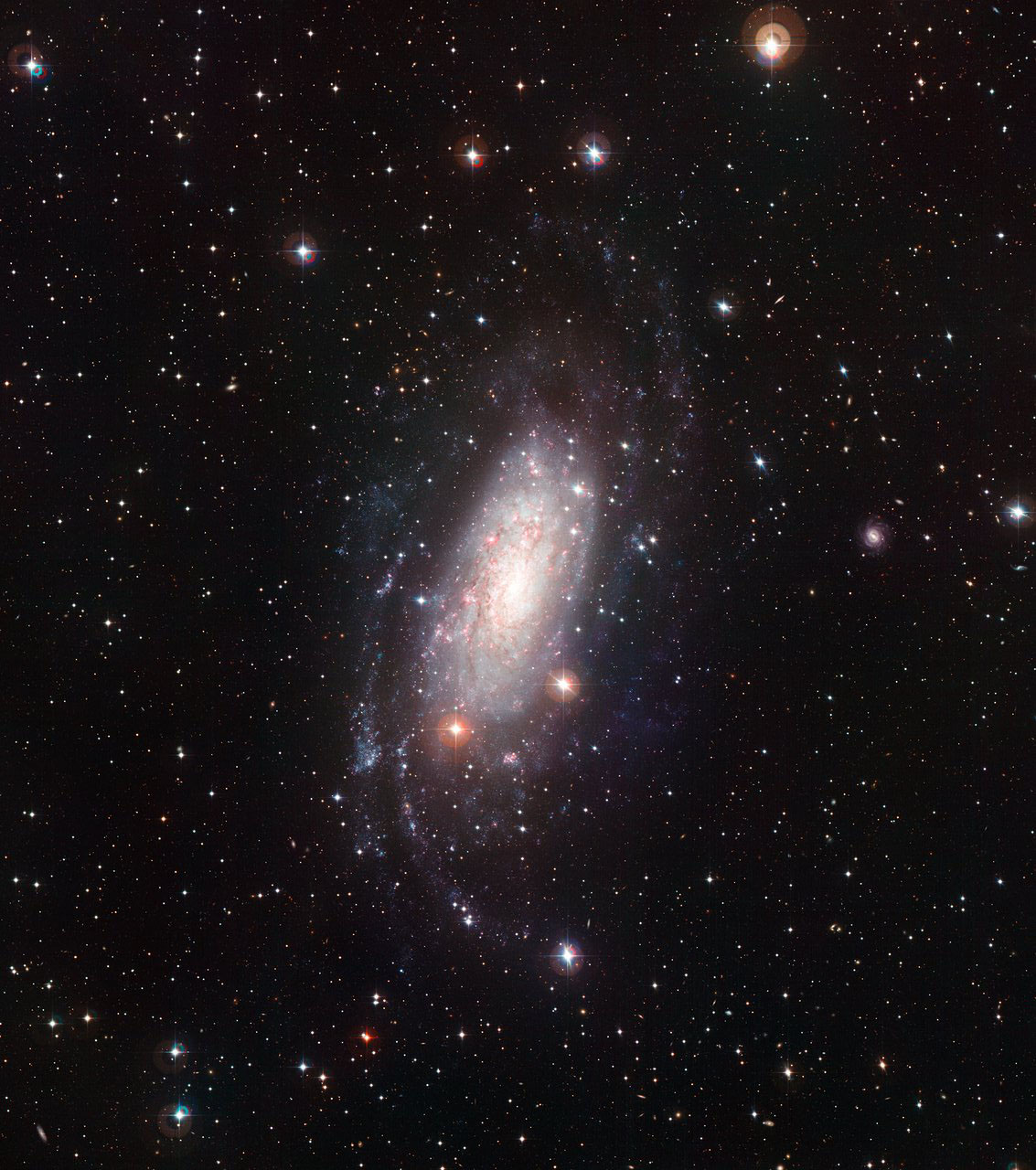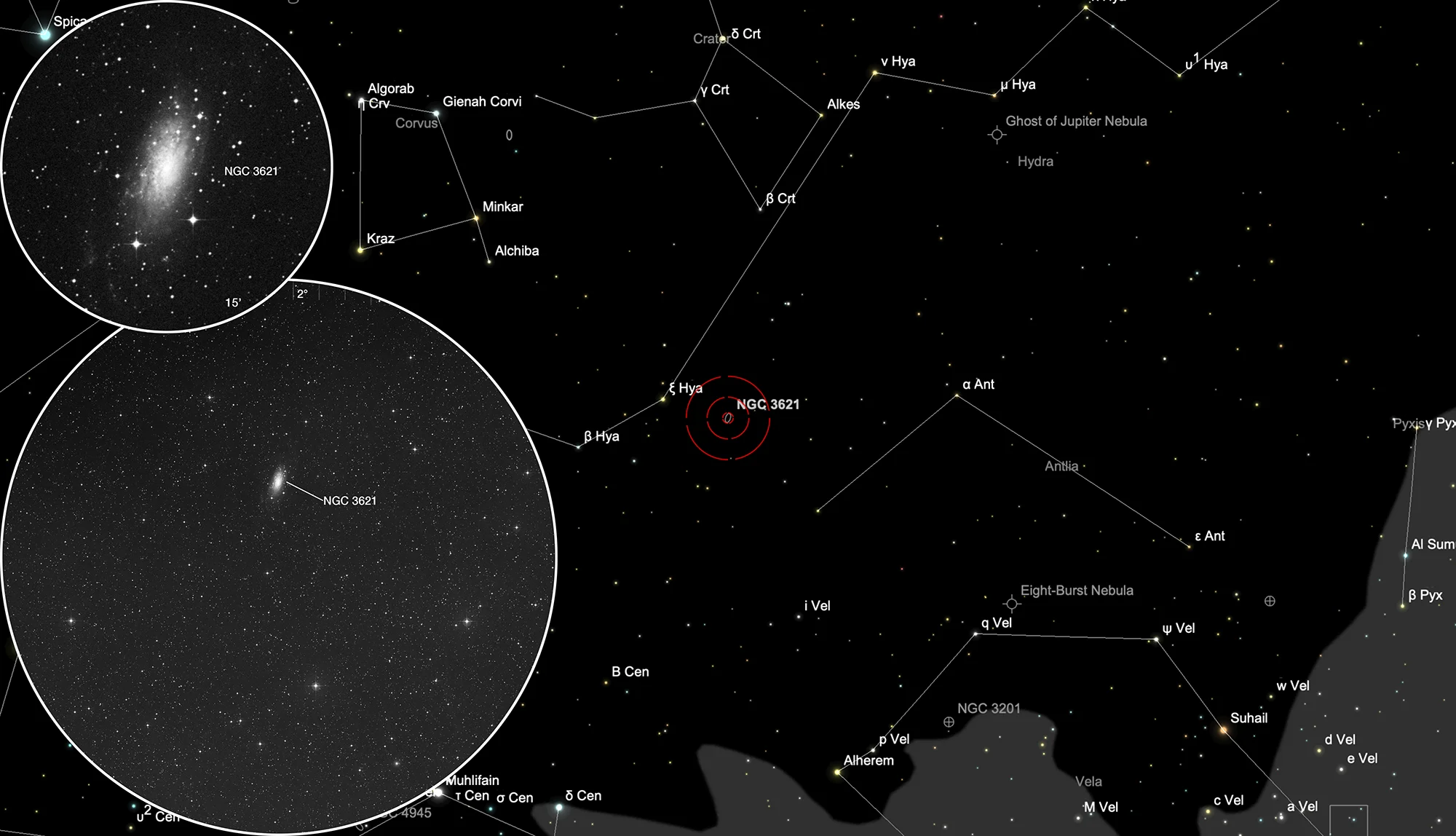Galaxy NGC 3621

History
The Galaxy NGC 3621 was discovered by William Herschel on 17 February 1790 using his 18.7-inch reflecting telescope in Slough, England. He listed it as I 241 and noted: «Considerably bright, extended 70° north preceding, south following, very gradually brighter in the middle, 7' long, 4' broad within a parallelogram.» At a maximum elevation of just 6.8° above southern horizon he probably observed it standing or sitting on steps on the ground, not in the observing gallery. [465]
Scottish astronomer James Dunlop observed the galaxy on 30 April 1826 using his self-built 9-inch reflector in Paramatta, New South Wales. He recorded it as D 617 with the notes: «A very faint pretty large nebula, about 2' broad and 4' long, very faint at the edges. The brightest and most condensed part is near the south following extremity; a small star is involved in the north preceding extremity, nd there are two small stars near the south extremity, but not involved.» [50]
John Herschel observed the galaxy on 29 April 1834 from the Cape of Good Hope using his 18.3-inch reflecting telescope. He listed it as h 3337 and noted: «Pretty bright, very large, oval, very gradually very little brighter in the middle, resolvable, 5' long, 3' broad.» [11]
Physical Properties
| Designation | NGC 3621 |
| Type | Gx (SBcd) |
| Right Ascension (J2000.0) | 11h 18m 15.8s |
| Declination (J2000.0) | -32° 48' 40" |
| Diameter | 12.3 × 6.8 arcmin |
| Photographic (blue) magnitude | 10.3 mag |
| Visual magnitude | 9.7 mag |
| Surface brightness | 14.3 mag·arcmin-2 |
| Position Angle | 159° |
| Redshift (z) | 0.002435 |
| Distance derived from z | 10.29 Mpc |
| Metric Distance | 6.760 Mpc |
| Dreyer Description | cB, vL, E 160°, am 4 st |
| Identification, Remarks | WH I 241; h 3337; GC 2371; ESO 377-37; MCG -5-27-8; UGCA 232; AM 1115-323; IRAS 11159-3235 |
Finder Chart
The galaxy NGC 3621 can be found in the constellation Hydra south of Crater. On 9 March it is in opposition to the Sun and crosses the meridian at local midnight. The best season for observation is November to August.
